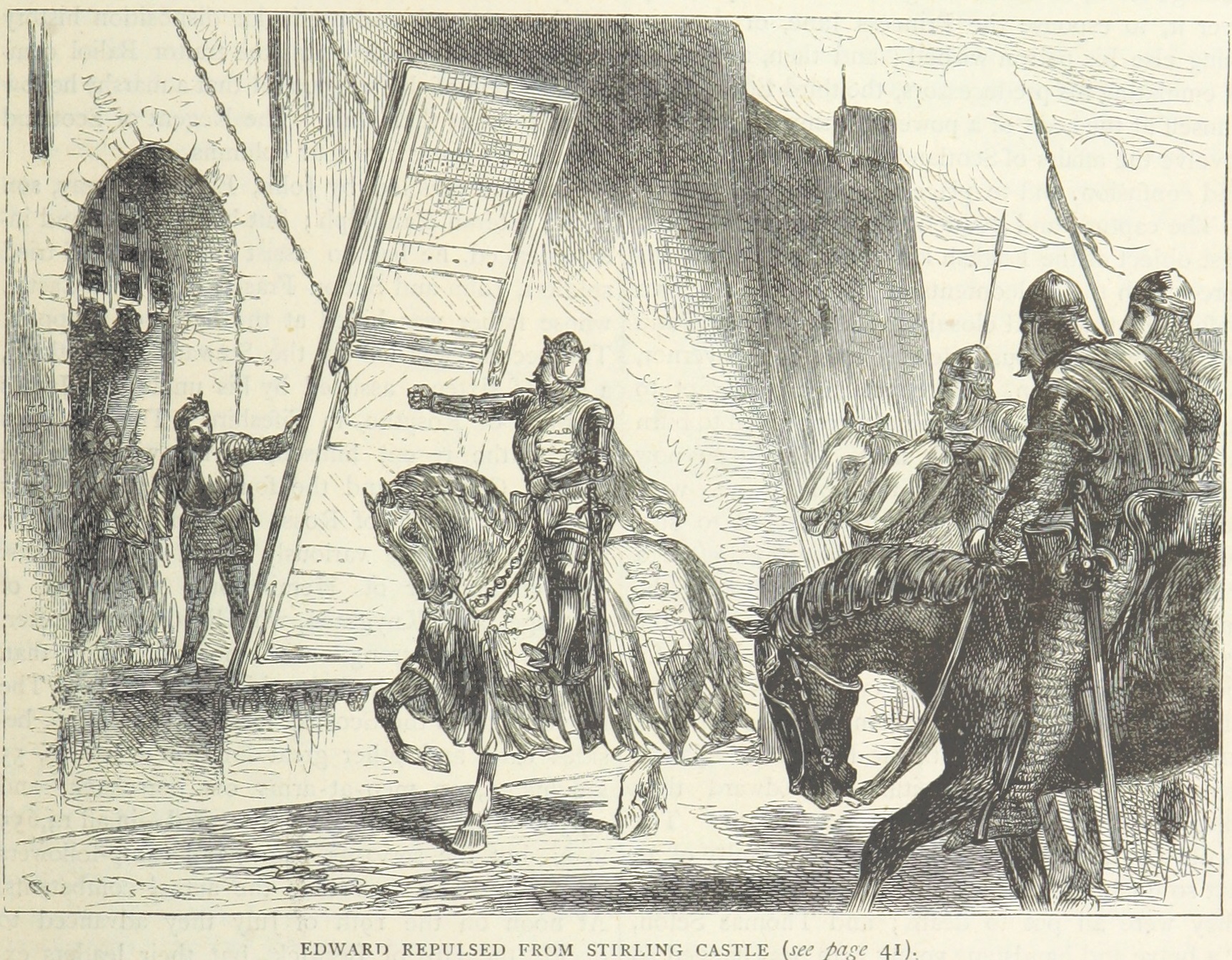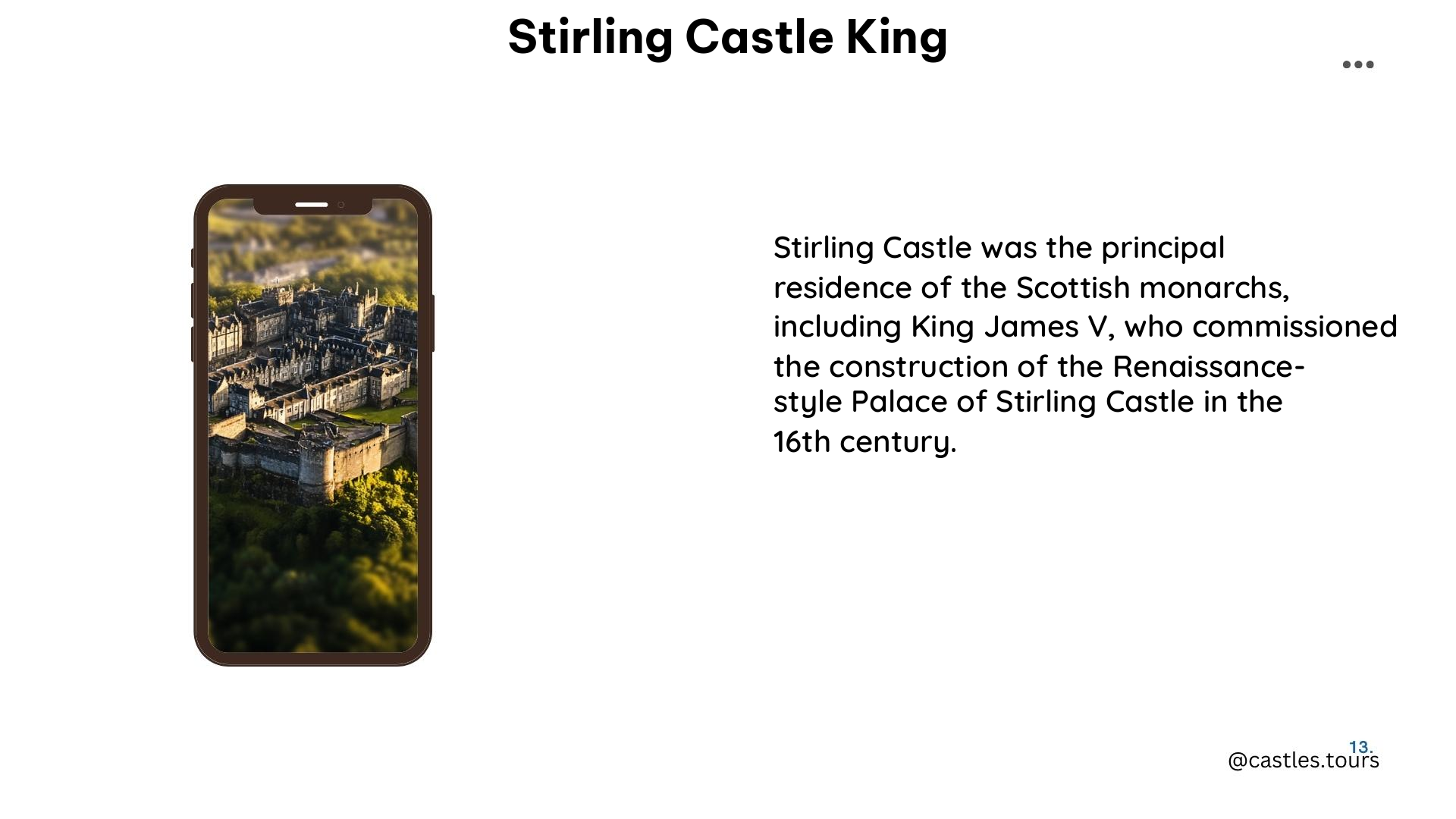Stirling Castle has a rich and captivating history, with numerous Scottish kings and queens leaving their mark on this iconic fortress. From Alexander I to James VI, each monarch has contributed to the castle’s architectural and historical significance, making it a true symbol of Scotland’s national pride.
The Earliest Royal Connections

The first recorded royal residence at Stirling Castle dates back to the reign of Alexander I, who dedicated a chapel within its walls in 1110. His heir, David I, further solidified the castle’s prominence by granting it the status of a Royal Burgh in 1124, which significantly boosted its economic and political standing.
The Hunting Ground and Expansion

William I, also known as William the Lion, created a recreational hunting ground, the King’s Park, in the woodlands south-east of the Castle. This hunting ground was later expanded by his grandson, Alexander III, in the 1260s, showcasing the castle’s importance as a royal retreat.
Turbulent Times and Tragic Events
The castle’s history is not without its share of turbulent events. During the reign of James II, the young king was sheltered at Stirling Castle by his mother, Joan Beaufort, after his father’s assassination in 1424. It was within the castle walls that James II later murdered William, 8th Earl of Douglas, in 1452, a dramatic and controversial act that left a lasting mark on the castle’s history.
Architectural Advancements
The castle’s architectural development is closely tied to the reigns of several Scottish kings. James IV began the construction of the Great Hall and the Forework, with the Great Hall, completed in 1503, being the largest medieval banqueting hall ever built in Scotland. His son, James V, continued this legacy by building the Palace, which was later completed by his widow, Mary de Guise, after his death in 1542.
The Chapel Royal and Religious Significance
The castle’s religious significance is also noteworthy, with James VI having the Chapel Royal built in 1594 for the baptism of his son, Prince Henry. This chapel was one of the first Protestant kirks in Scotland, reflecting the changing religious landscape of the time.
Key Facts and Figures
| Fact | Detail |
|---|---|
| Cost | The refurbishment of the Chapel Royal and Great Hall cost £2 million. |
| Timings | The Great Hall was completed in 1503, and the Chapel Royal was built in 1594. |
| Directory | Stirling Castle is managed by Historic Environment Scotland. |
| Hours | The castle is open from 9:30 am to 6:00 pm from April to September and from 9:30 am to 5:00 pm from October to March. |
| Rates | Admission prices vary depending on the season and visitor type, with adult tickets ranging from £16 to £19.50. |
| Value | Stirling Castle is a Scheduled Ancient Monument and a significant tourist attraction. |
Stirling Castle’s rich history of royal connections has left an indelible mark on Scotland’s cultural and architectural heritage. From the earliest royal residences to the dramatic events and architectural advancements, this iconic fortress continues to captivate visitors and historians alike, offering a glimpse into the fascinating lives of the Scottish kings who called it home.
